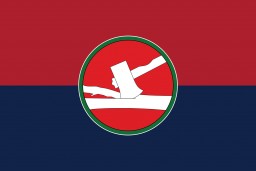<< Previous | Displaying results 6351-6400 of 6707 for "" | Next >>
-
Marzahn Camp for Roma and Sinti Established
Timeline EventJuly 16, 1936. On this date, German authorities order the roundup of Roma and Sinti in Berlin, confining them in a new camp in the Marzahn suburb.

-
Himmler Decree on “Combating the Gypsy Plague”
Timeline EventDecember 08, 1938. On this date, Himmler orders that Nazi Germany’s policies regarding Roma and Sinti should be developed according to Nazi racial principles.
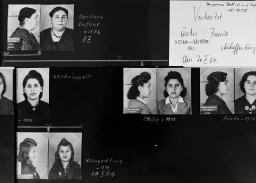
-
Himmler Orders Deportation of Roma and Sinti to Auschwitz
Timeline EventDecember 16, 1942. On this date, Heinrich Himmler issues an order that Roma and Sinti are to be deported to Auschwitz.
-
Timeline of Events
TimelineExplore a timeline of events that occurred before, during, and after the Holocaust.

-
In Their Own Words: Holocaust Survivor Testimonies
SeriesListen to excerpts from oral testimonies to learn from survivors themselves about their individuals experiences, actions, and choices.
-
What have we learned about the risk factors and warning signs of genocide?
Discussion QuestionThe study of the Holocaust raises questions about how the world can recognize and respond to indications that a country is at risk for genocide or mass atrocity. While each genocide is unique, in most places where genocide occurs, there are common...

-
How and why did ordinary people across Europe contribute to the persecution of their Jewish neighbors?
Discussion QuestionMany Europeans witnessed acts of persecution, including violence against Jews and, later, deportations. While few were aware of the full extent of the Nazi "Final Solution," this history poses difficult and fundamental questions about human behavi...
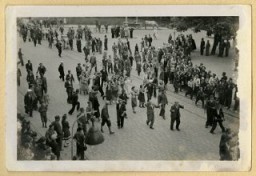
-
How did German professionals and civil leaders contribute to the persecution of Jews and other groups?
Discussion QuestionHow involved in the Holocaust were German professionals and civil leaders? What were some of the motivations and pressures that led to a wide range of behavior? What indeed was the range of behavior, from complying to perpetrating?Explore t...
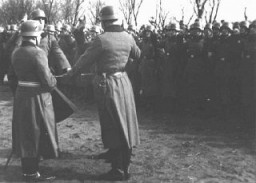
-
What conditions, ideologies, and ideas made the Holocaust possible?
Discussion QuestionThe leaders of Nazi Germany, a modern, educated society, aimed to destroy millions of men, women, and children because of their Jewish identity. Understanding this process may help us to better understand the condit...

-
Which organizations and individuals aided and protected Jews from persecution between 1933 and 1945?
Discussion QuestionExplore this question to learn about the motivations and challenges of those who aided Jews
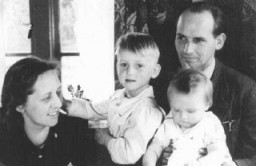
-
How did the Nazis and their collaborators implement the Holocaust?
Discussion QuestionWhen Nazi Party leader Adolf Hitler became German chancellor on January 30, 1933, no step-by-step blueprint for the genocide of Jews as a “race” existed. After the outbreak of World War II, millions of Jews came und...

-
How did leaders, diplomats, and citizens around the world respond to the events of the Holocaust?
Discussion QuestionExplore this question to learn about the responses of leaders and citizens
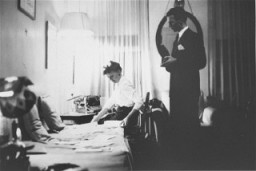
-
How did the United States government and American people respond to Nazism?
Discussion QuestionConsideration of American responses to Nazism during the 1930s and 1940s raises questions about the responsibility to intervene in response to persecution or genocide in another country.

-
What does war make possible?
Discussion QuestionPersecution of Jews and other targeted groups was already government policy in Germany once the Nazis were in power in 1933. But following the German invasion of Poland on September 1, 1939, war provided the opportunity and motivation for more ext...

-
How did postwar trials shape approaches to international justice?
Discussion QuestionThe aftermath of the Holocaust raised questions about the search for justice in the wake of mass atrocity and genocide. The World War II Allied powers provided a major, highly public model for establishing internati...

-
How did the shared foundational element of eugenics contribute to the growth of racism in Europe and the United States?
Discussion QuestionLearn more about the shared foundational element of eugenics on the history of racial antisemitism in Germany and racism in the United States

-
What were some similarities between racism in Nazi Germany and in the United States, 1920s-1940s?
Discussion QuestionLearn about some aspects that are similar and some that are different in the history of racial antisemitism in Germany and racism in the United States.
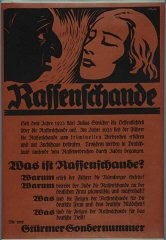
-
How did different goals and political systems shape racism in Nazi Germany and the United States?
Discussion QuestionThis discussion question focuses on the history of racial antisemitism in Germany and its relationship to racism in the United States.
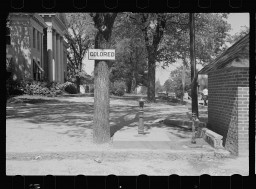
-
Horst Wessel leads his SA formation through the streets
PhotoHorst Wessel leads his SA formation through the streets of Nuremberg during the fourth Nazi Party Congress in August 1929.

-
Women’s Suffrage in Weimar-era Germany
PhotoA crowd stands outside of a polling center in Berlin during the German national election in January 1919. This was the first election held under the Weimar Republic (1918–1933), as well as the first election in which women had the legal right to vote in Germany. Women's suffrage was declared in Germany only a couple of months earlier, on November 12, 1918. © IWM Q 110868
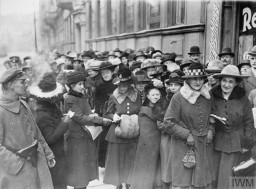
-
Call for Jews to fight antisemitism in prewar Hungary
PhotoThis photo shows a placard urging Hungarian Jews to unite against rising antisemitism in prewar Hungary and Europe. It rallies Jews to protest, using such phrases as: "Protect Jewish honor!”; “Do not buy from our enemies!”; and “Do not watch movies from the Third Reich." Hungary, 1937.
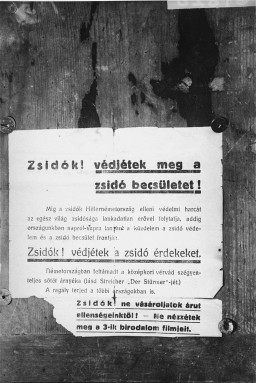
-
World War I armistice, November 1918
PhotoThe armistice that ended the hostilities of World War I was signed in a railcar in the Forest of Compiègne. The railcar belonged to French Marshal Ferdinand Foch, the commander of the victorious Allied forces. © IWM Q 61172
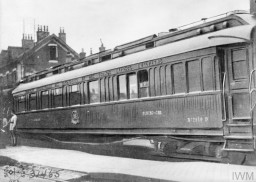
-
Flag graphic for the US 101st Airborne Division
PhotoA digital representation of the United States 101st Airborne Division's flag. The US 101st Airborne Division (the "Screaming Eagles" division) was established in 1942. During World War II, they were involved in D-Day and the Battle of the Bulge. The division also captured the city of Eindhoven and uncovered the Kaufering IV camp. The 101st Airborne Division was recognized as a liberating unit in 1988 by the United States Army Center of Military History and the United States Holocaust Memorial Museum…

-
Flag graphic for US 103rd Infantry Division
PhotoA digital representation of the United States 103rd Infantry Division flag. The US 103rd Infantry Division (the "Cactus" division) was established in 1942. During World War II, they were involved in the Battle of the Bulge and captured the city of Innsbruck. The division also uncovered a Nazi subcamp attached to Kaufering camp complex. The 103rd Infantry Division was recognized as a liberating unit in 1985 by the US Army's Center of Military History and the United States Holocaust Memorial Museum…
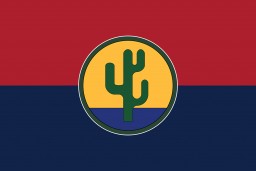
-
Flag graphic for US 104th Infantry Division
PhotoA digital representation of the United States 104th Infantry Division's flag. The US 104th Infantry Division (the "Timberwolf" division) was activated in 1942. During World War II, they captured the cities of Cologne and Halle. The division also overran Nordhausen and the Dora-Mittelbau concentration camp. The 104th Infantry Division was recognized as a liberating unit in 1988 by the United States Army Center of Military History and the United States Holocaust Memorial Museum (USHMM).
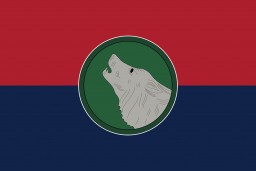
-
Flag graphic for US 10th Armored Division
PhotoA digital representation of the United States 10th Armored Division's flag. The US 10th Armored Division is also known as the "Tiger" division. During World War II, they captured the cities of Trier and Oberammergau. The division also overran a Dachau subcamp. The 10th Armored Division was recognized as a liberating unit in 1985 by the United States Army Center of Military History and the United States Holocaust Memorial Museum (USHMM).

-
Flag graphic for US 11th Armored Division
PhotoA digital representation of the United States 11th Armored Division's flag. The US 11th Armored Division (the "Thunderbolt" division) was formed in 1942. During World War II, they were involved in the Battle of the Bulge and captured the cities of Coburg, Bayreuth, and Linz. The division also overran the Mauthausen and Gusen concentration camps. The 11th Armored Division was recognized as a liberating unit in 1985 by the United States Army Center of Military History and the United States Holocaust…
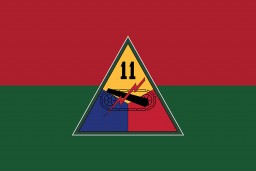
-
Flag graphic for US 12th Armored Division
PhotoA digital representation of the United States 12th Armored Division's flag. The US 12th Armored Divison is also known as the "Hellcats" division. During World War II, they captured the cities of Ludwigshafen and Würzburg. The division also overran a subcamp of Dachau. The 12th Armored Division was recognized as a liberating unit in 1988 by the United States Army Center of Military History and the United States Holocaust Memorial Museum (USHMM).
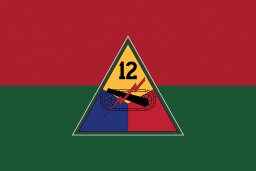
-
Flag graphic for US 14th Armored Division
PhotoA digital representation of the United States 14th Armored Division's flag. The US 14th Armored Division (the "Liberators" division) joined the war in 1944. During World War II, they uncovered several subcamps of Dachau, three large forced-labor camps, and several other nearby camps. The 14th Armored Division was recognized as a liberating unit in 1991 by the United States Army Center of Military History and the United States Holocaust Memorial Museum (USHMM).
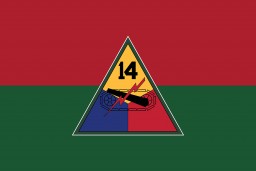
-
Flag graphic for US 1st Infantry Division
PhotoA digital representation of the United States 1st Infantry Division's flag. The US 1st Infantry Division (the "Big Red One" division) was formed in 1917 and fought in World War I. During World War II, they were involved in the Allied invasions of North Africa and Italy, as well as D-Day and the Battle of the Bulge. Additionally, the division captured the city of Aachen and liberated Zwodau and Falkenau an der Eger, two subcamps of Flossenbürg. The 1st Infantry Division was recognized as a liberating…

-
Flag graphic for US 20th Armored Division
PhotoA digital representation of the United States 20th Armored Division's flag. The US 20th Armored Division was occasionally known as the "Armoraiders" during World War II. They participared in the liberation of the Dachau concentration camp. The 20th Armored Division was recognized as a liberating unit in 1985 by the United States Army Center of Military History and the United States Holocaust Memorial Museum (USHMM).
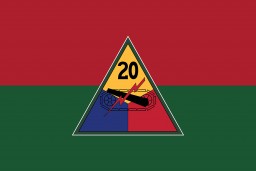
-
Flag graphic for US 26th Infantry Division
PhotoA digital representation of the United States 26th Infantry Division's flag. The US 26th Infantry Division (the "Yankee" division) was formed in 1917 and fought in World War I. During World War II, they were involved in the Battle of the Bulge and captured the city of Linz. The division also overran the Gusen concentration camp. The 26th Infantry Division was recognized as a liberating unit in 2002 by the United States Army Center of Military History and the United States Holocaust Memorial Museum…
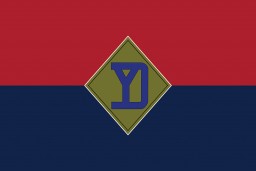
-
Flag graphic for US 29th Infantry Division
PhotoA digital representation of the United States 29th Infantry Division's flag. The US 29th Infantry Division (the "Blue and Gray" division) was established in 1917 and fought in World War I. During World War II, they were involved in D-Day, as well as the liberation of Dinslaken civilian labor camp. The 29th Infantry Division was recognized as a liberating unit in 1995 by the United States Army Center of Military History and the United States Holocaust Memorial Museum (USHMM).

-
Flag graphic for US 2nd Infantry Division
PhotoA digital representation of the United States 2nd Infantry Division's flag. The US 2nd Infantry Division (the "Indianhead" division) was created in 1917 and fought in World War I. During World War II, they were involved in D-Day and the Battle of the Bulge. They also captured the cities of Leipzig and Hadamar. Additionally, the division overran Leipzig-Schönefeld, a subcamp of Buchenwald, and liberated prisoners at the Spergau/Zöschen camp. The 2nd Infantry Division was recognized as a liberating unit…
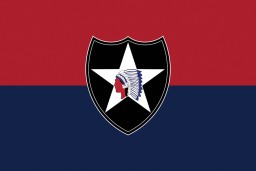
-
Flag graphic for US 30th Infantry Division
PhotoA digital representation of the United States 30th Infantry Division's flag. The US 30th Infantry Division (the "Old Hickory" division) was established in 1917 and fought in World War I. During World War II, they were involved in the Battle of the Bulge and also liberated Weferlingen, a subcamp of Buchenwald. The 30th Infantry Division was recognized as a liberating unit in 2012 by the United States Army Center of Military History and the United States Holocaust Memorial Museum (USHMM).
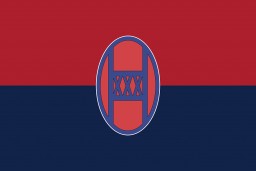
-
Flag graphic for US 36th Infantry Division
PhotoA digital representation of the United States 36th Infantry Division's flag. The US 36th Infantry Division (the "Texas" or "Lone Star" division) was established in 1917 and fought in World War I. During World War II, they were involved in the Allied invasions of North Africa and the Battle of the Bulge. The division also overran some of the Kaufering subcamps of the Dachau concentration camp. The 36th Infantry Division was recognized as a liberating unit in 1995 by the United States Army Center of…
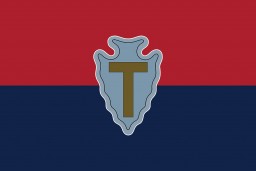
-
Flag graphic for US 3rd Armored Division
PhotoA digital representation of the United States 3rd Armored Division's flag. The US 3rd Armored Division (the "Spearhead" division) was established in 1941. During World War II, they were involved in the Battle of the Bulge and captured the city of Cologne. The division also discovered the Dora-Mittelbau concentration camp. The 3rd Armored Division was recognized as a liberating unit in 1985 by the United States Army Center of Military History and the United States Holocaust Memorial Museum (USHMM).
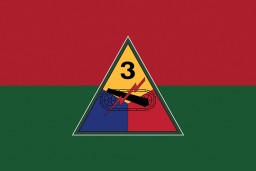
-
Flag graphic for US 42nd Infantry Division
PhotoA digital representation of the United States 42nd Infantry Division's flag. The US 42nd Infantry Division (the "Rainbow" division) was established in 1917 and fought in World War I. During World War II, they captured the cities of Würzburg, Schweinfurt, and Fürth. The division also entered the Dachau concentration camp. The 42nd Infantry Division was recognized as a liberating unit in 1985 by the United States Army Center of Military History and the United States Holocaust Memorial Museum…

-
Flag graphic for US 45th Infantry Division
PhotoA digital representation of the United States 45th Infantry Division's flag. The US 45th Infantry Division (the "Thunderbird" division) was established in 1924. During World War II, they were involved in the Allied invasions of North Africa and Italy, as well as the capture of the city of Nuremberg. The division also liberated the Dachau concentration camp. The 45th Infantry Division was recognized as a liberating unit in 1985 by the United States Army Center of Military History and the United States…
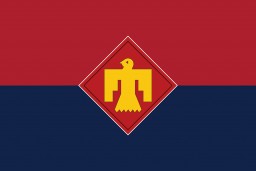
-
Flag graphic for US 4th Armored Division
PhotoA digital representation of the United States 4th Armored Division's flag. The US 4th Armored Division is also known as the "Breakthrough" division. During World War II, they were involved in the Battle of the Bulge and overran Ohrdruf, a subcamp of Buchenwald. The 4th Armored Division was recognized as a liberating unit in 1985 by the United States Army Center of Military History and the United States Holocaust Memorial Museum (USHMM).
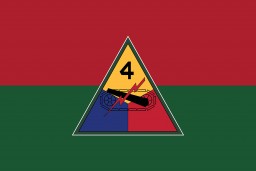
-
Flag graphic for US 4th Infantry Division
PhotoA digital representation of the United States 4th Infantry Division's flag. The US 4th Infantry Division (the "Ivy" division) was established in 1917 and fought in World War I. During World War II, they were involved in D-Day, the liberation of Paris, and the Battle of the Bulge. The division also captured the city of Nuremberg and discovered a Dachau subcamp near Haunstetten. The 4th Infantry Division was recognized as a liberating unit in 1992 by the United States Army Center of Military History and…

-
Flag graphic for US 63rd Infantry Division
PhotoA digital representation of the United States 63rd Infantry Division's flag. The US 63rd Infantry Division (the "Blood and Fire" division) was established in 1943. During World War II, they took the town of Heidelberg and liberated several Kaufering subcamps. The 63rd Infantry Division was recognized as a liberating unit in 2000 by the United States Army Center of Military History and the United States Holocaust Memorial Museum (USHMM).
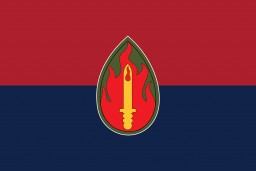
-
Flag graphic for US 65th Infantry Division
PhotoA digital representation of the United States 65th Infantry Division's flag. The US 65th Infantry Division (the "Battle Axe" division) was established in 1943. During World War II, they took the cities of Regensburg, Passau, and Linz. The division also overran a subcamp of the Flossenbürg concentration camp. The 65th Infantry Division was recognized as a liberating unit in 1994 by the United States Army Center of Military History and the United States Holocaust Memorial Museum (USHMM).
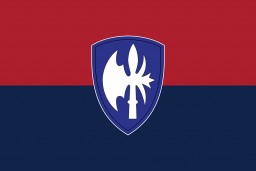
-
Flag graphic for US 69th Infantry Division
PhotoA digital representation of the United States 69th Infantry Division's flag. The US 69th Infantry Division ("Fighting 69th") was established in 1943. During World War II, they captured the city of Leipzig and uncovered Leipzig-Thekla, a subcamp of Buchenwald. The 69th Infantry Division was recognized as a liberating unit in 1993 by the United States Army Center of Military History and the United States Holocaust Memorial Museum (USHMM).
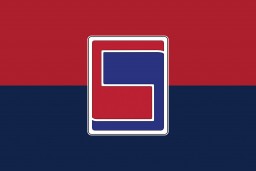
-
Flag graphic for US 6th Armored Division
PhotoA digital representation of the United States 6th Armored Division's flag. The US 6th Armored Division is also known as the "Super Sixth." During World War II, they were involved in the Battle of the Bulge and overran the Buchenwald concentration camp. The 6th Armored Division was recognized as a liberating unit in 1985 by the United States Army Center of Military History and the United States Holocaust Memorial Museum (USHMM).

-
Flag graphic for US 71st Infantry Division
PhotoA digital representation of the United States 71st Infantry Division's flag. The US 71st Infantry Division (the "Red Circle" division) was established in 1943. During World War II, they were involved in taking the cities of Coburg, Bayreuth, and Regensburg. The division also liberated Gunskirchen, a subcamp of Mauthausen. The 71st Infantry Division was recognized as a liberating unit in 1988 by the United States Army Center of Military History and the United States Holocaust Memorial Museum (USHMM).
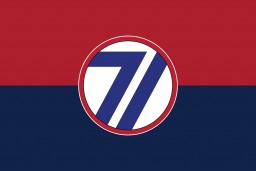
-
Flag graphic for US 80th Infantry Division
PhotoA digital representation of the United States 80th Infantry Division's flag. The US 80th Infantry Division (the "Blue Ridge" division) was established in 1917 and fought in World War I. During World War II, they were involved in the Battle of the Bulge. The division entered Buchenwald concentration camp and liberated Ebensee, a subcamp of Mauthausen. The 80th Infantry Division was recognized as a liberating unit in 1985 by the United States Army Center of Military History and the United States Holocaust…
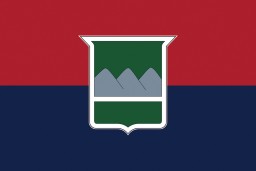
-
Flag graphic for US 82nd Airborne Division
PhotoA digital representation of the United States 82nd Airborne Division's flag. The US 82nd Airborne Division (the "All American" division) was established in 1918 and fought in World War I. During World War II, they were involved in D-Day and Battle of the Bulge. The division also overran Wöbbelin, a subcamp of Neuengamme. The 82nd Airborne Division was recognized as a liberating unit in 1991 by the United States Army Center of Military History and the United States Holocaust Memorial Museum (USHMM).
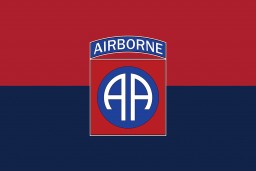
-
Flag graphic for US 83rd Infantry Division
PhotoA digital representation of the United States 83rd Infantry Division's flag. The US 83rd Infantry Division (the "Thunderbolt" division) was established in 1917 and fought in World War I. During World War II, they were involved in the Battle of the Bulge and captured the city of Halle. The division also encountered Langenstein, a subcamp of Buchenwald. The 83rd Infantry Division was recognized as a liberating unit in 1993 by the United States Army Center of Military History and the United States…
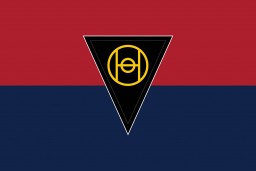
-
Flag graphic for US 84th Infantry Division
PhotoA digital representation of the United States 84th Infantry Division's flag. The US 84th Infantry Division (the "Railsplitter" division) was established in 1917. During World War II, they were involved in the Battle of the Bulge and captured the city of Hannover. The division also uncovered Hannover-Ahlem and Salzwedel, two satellite camps of the Neuengamme concentration camp. The 84th Infantry Division was recognized as a liberating unit in 1993 by the United States Army Center of Military History and…
